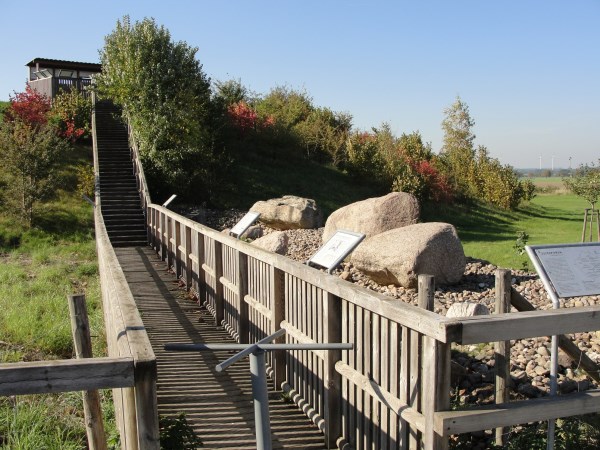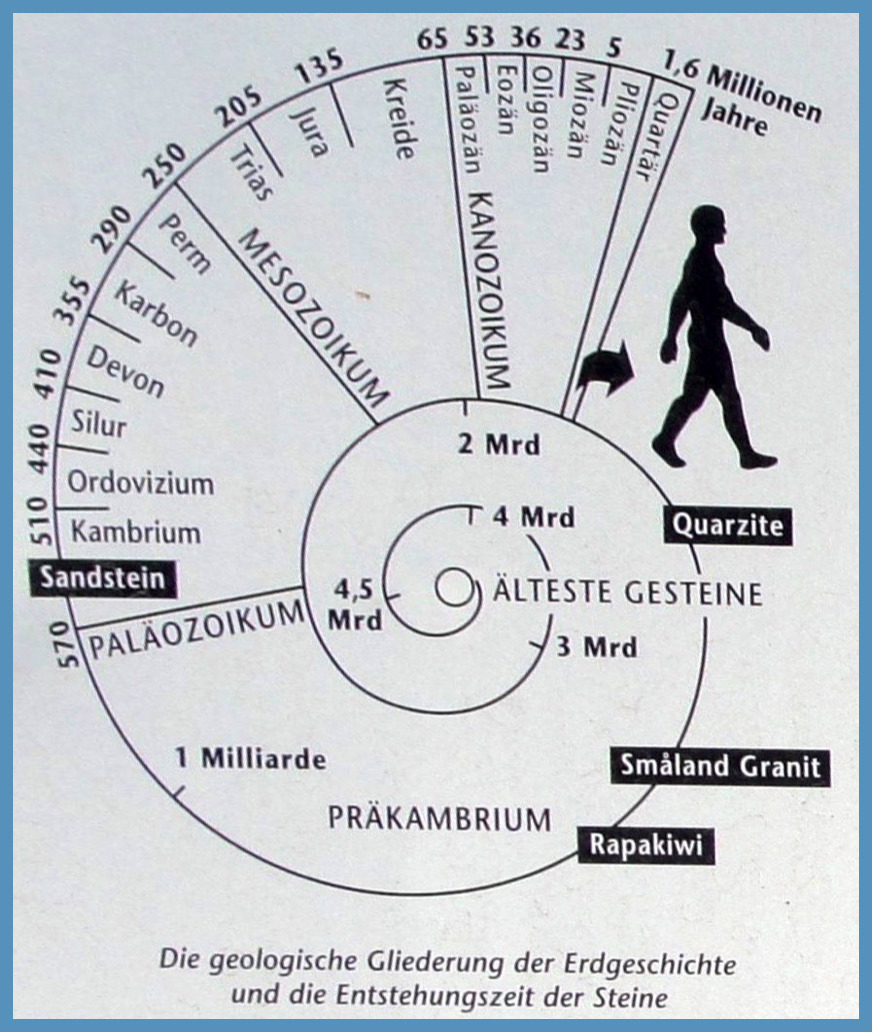Stöckener Speichersteine EarthCache
-
Difficulty:
-

-
Terrain:
-

Size:  (other)
(other)
Please note Use of geocaching.com services is subject to the terms and conditions
in our disclaimer.

Dieser kleine schnuckelige Findlingsgarten ist Teil des ehemaligen niedersächsischen Natur-Erleben-Programms. Als touristisch ausgebauter Platz ist er öffentlich zugänglich. Der eigentliche Standort der Findlinge ist jedoch ein als Naturdenkmal (UE 122) geschützter Bereich. Die Zäune um die Steine dürfen daher nicht überklettert werden.

Geologie, Hydrologie und Biologie
Am Rande des Stöckener Speicherbeckens sind dreizehn Findlinge zu diesem „Garten“ aufgestellt worden. Die Erklärung zum Naturdenkmal erfolgte aufgrund ihrer Bedeutung für die Wissenschaft sowie ihrer besonderen Eigenart, Schönheit und Seltenheit.
Während der jüngeren Abschnitte der Saale-Eiszeit wurden diese Sediment-, Tiefen- und Umwandlungsgesteine von einem Gletscher aus Skandinavien in das Uelzener Becken geschleppt. Gefunden wurden sie beim Bau des benachbarten Speicherbeckens im Jahre 2002.
Die im Findlingsgarten aufgestellten Steine stammen überwiegend aus Schweden. Es lässt sich jedoch auch ein Granit aus Finnland finden. Eine detaillierte Beschreibung zur Art und Herkunft aller Findlinge gibt es auf den vor Ort aufgestellten vier Informationstafeln.

Weitere sechs Informationstafeln geben ausführlich Auskunft über den im Juli 2003 fertig gestellten Wasserspeicher. Das im Zuckergewinnungsprozess der nahe gelegenen Zuckerfabrik gewonnene Wasser wird nach biologischer Reinigung hier zwischengelagert. Es wird später für die Bedarfsberegnung landwirtschaftlicher Kulturen genutzt.
Am Rande des Wasserspeichers befindet sich ein Beobachtungsstand, von dem man einen herrlichen Blick auf die Wasserfläche hat. Hier kann man zur Rast- und Brutzeit eine Vielfalt verschiedener Vogelarten beobachten. Die von der NABU Kreisgruppe Uelzen angebrachten drei Tafeln stellen alle vorkommenden Arten umfassend dar.
Quellen:
Foto Findlingsgarten: selbst
Schemazeichnung: Infotafel Tourismuskreis Uelzen
Um diesen Cache zu loggen, müsst ihr vier Fragen beantworten und ein Foto machen:
1. Vor wie viel Jahren wurde das Uelzener Becken von Gletschern geformt?
2. Welches Alter hat der Sandstein?
3. Wie lautet der lateinische Name der Tiefengesteine?
4. Welches Gewicht hat der Granatgneis (größter vor Ort aufgestellter Findling)?
5. Macht ein Foto von euch, eurem GPS oder Maskottchen vor den Findlingen!
Durch das Absenden einer E-Mail (Message-Center ist selbstverständlich auch okay) mit den Antworten und eurem GC-Namen an uns und das Hochladen des Fotos in euren Online-Log erteilt ihr euch die Logfreigabe selbst. Sofern es Probleme mit euren Lösungen geben sollte, melden wir uns!
Schickt die E-Mail an
kenguruhs_earth-caches@gmx.de.
Das Team KenGuruh wünscht viel Spaß an diesem Ort, der drei interessante wissenschaftliche Fachbereiche auf einem Fleck zusammenführt. 🦘
🇬🇧🇬🇧🇬🇧🇬🇧🇬🇧🇬🇧🇬🇧🇬🇧🇬🇧🇬🇧🇬🇧
This little erratic block garden is part of the Lower Saxon nature-experiencing program. As touristly fully developed place he is publicly accessible. The location of the erratic blocks is an area protected as a natural monument (UE 122). The fences around the stones mustn't therefore become to climb over.
Geology, hydrology and biology
There are thirteen erratic blocks on the edge of the Stöckener reservoir got built to this garden. The declaration about the natural monument was carried out due to her significance for science as well as her special peculiarity, beauty and rareness.
During the younger sections of the hall ice age these sediment, depths and transformation rocks were dragged by a glacier from Scandinavia to the Uelzener pelvis. They were found for the making of the neighboring reservoir in 2002.
The stones built in the erratic block garden are predominantly from Sweden. But you can also find granite from Finland. The information panels give in a detailed description to the way and origin of all erratic blocks on the four built on the spot.
Another six information panels give in detail information about the reservoir completed in July 2003. The water won in the sugar extraction process of the near situated sugar factory is stored after a biological cleaning here. It is of use for the need watering more agriculturally for cultures later.
An observation stand of which one has a marvelous view of the expanse of water is on the edge of the reservoir. One can watch a variety of different species of birds here at the rest and brooding time. The three panels attached by the NABU circle group of Uelzen represent all happening types comprehensively.
To log this Earthcache you have to answer four questions and fulfill one task.
1. How many years ago was the Uelzener pelvis formed by glaciers?
2. Which age does the sandstone [Sandstein} have?
3. What is the Latin name of the plutonic rocks [Tiefengesteine]?
4. Which weight does the garnet gneiss [Granatgneis] (tallest erratic block built on the spot) have?
5. Take a picture of you in front of the erratic blocks!
Send an E-Mail with the answers and your gc-name and upload the picture with your log, so you give yourself the release. If there is something wrong, we give sign. Send an Email to kenguruhs_earth-caches@gmx.de.
The Team KenGuruh wishes a lot of fun with this place which brings three interesting scientific schools together on a spot.
Additional Hints
(No hints available.)